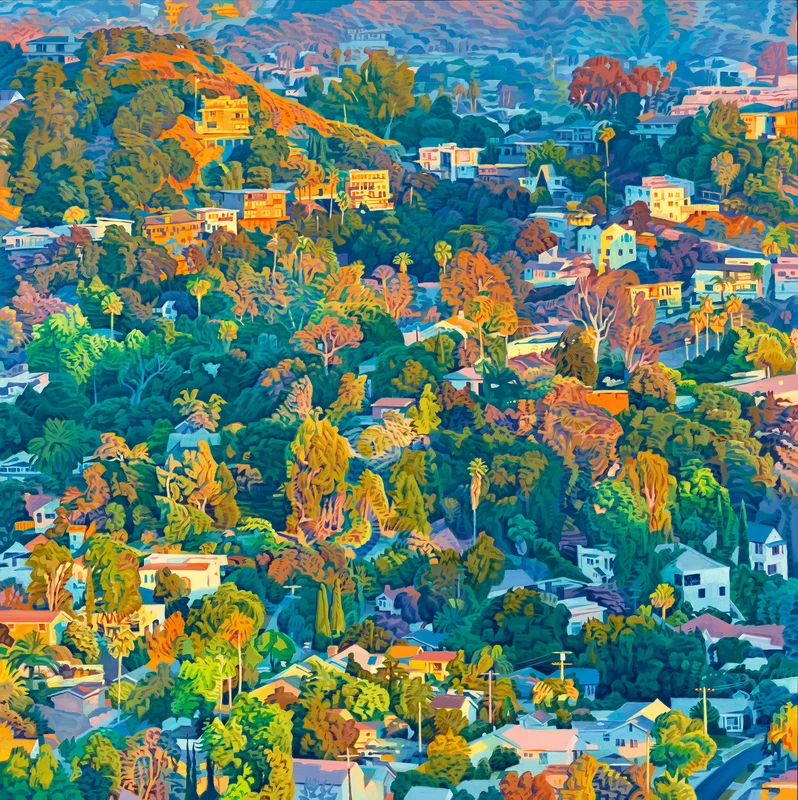Seth Armstrong: Subrosa
9 Jul-17 Aug 2025
PV 10 Jul 2025, 6-8pm


In this new body of work, Armstrong explores the clandestine realities of life in Los Angeles, a city often caught between myth and truth. Suburban homes are both revealed and concealed beneath the lush vegetation of the LA hills, yet Subrosa invites viewers to peer beneath their verdant canopies and uncover the hidden human stories Armstrong has documented beneath the foliage.
Armstrong’s new works evolved from long walks through his own LA neighbourhood, taken in the early hours with his young son, and from images captured while driving through the city, chasing light and shadow as it shifts. Though many scenes appear idyllic, the paintings are shaped by an awareness of the stark realities that sit just beyond the frame: fire-scorched mountains, economic precarity, and a city in flux.
Thematically, Subrosa continues Armstrong’s long-standing exploration of privacy, voyeurism, and urban life. His compositions often depict houses obscured by foliage, or figures glimpsed through half-shut windows. Some works appear empty, only revealing their human presence after close inspection. Others play with the viewer’s expectations, offering uncanny stillness where one might anticipate life. Armstrong engineers moments of discovery – a sudden recognition of a figure, a shadow that shifts into meaning – fostering a sense of intimate connection that is at once playful and profound. “There’s substance behind the forms,” Armstrong notes, “Sometimes you get a peek inside, sometimes you don’t.”
The palette throughout this series is rich and saturated, reflecting Armstrong’s attention to atmospheric depth and the changing conditions of light in the Los Angeles basin. There is a newfound expansiveness in these works – a sense of space thick with air, smoke, and memory. Architectural silhouettes, distant hills, and blooming canopies appear both timeless and fragile, rooted in a city perpetually balancing between image and erasure.
Ultimately, Subrosa presents a vision of Los Angeles that is both loving and unsentimental. These are not merely landscapes; they are human terrains, charged with the complexities of presence, absence, and illusion. Armstrong does not dictate how we should feel, but rather invites us to linger – to question what is visible, what is hidden, and what stories unfold in the quiet spaces between.